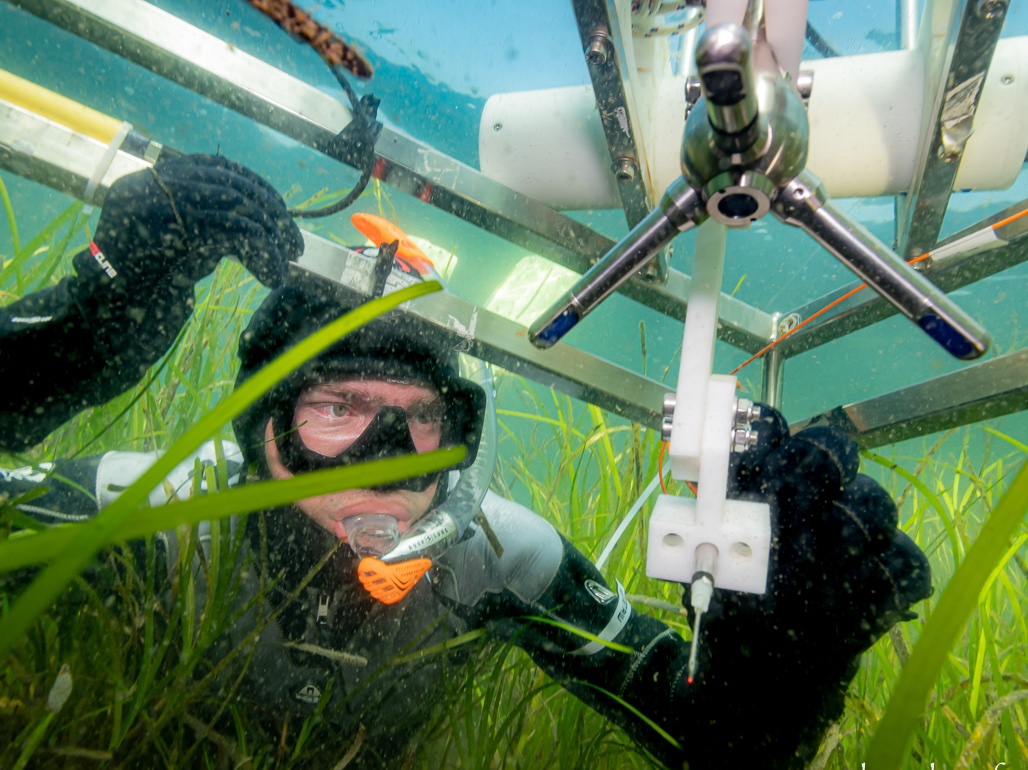Due to large losses of seagrass meadows worldwide, restoration is proposed as a key strategy for increasing coastal resilience and recovery. The emergence of a seagrass meadow is anticipated to substantially increase biodiversity and enhance benthic metabolism through increased primary productivity and respiration. Yet, open questions remain regarding the metabolic balance of aging seagrass meadows and the roles benthic communities of the seagrass ecosystem play in overall metabolism.
To address these questions, we investigated a chronosequence of bare sediments, adjacent Zostera marina meadows of three and seven years since restoration and a natural meadow located within a high-temperate marine embayment in Gåsö, Sweden. We combined continuous measurements of O2 fluxes using underwater eddy covariance with dissolved inorganic carbon (DIC) and O2 fluxes from benthic chambers during the productive season (July). Based on the ratio between O2 and DIC, we obtained site-specific photosynthetic and respiratory quotients from which we could convert eddy covariance fluxes to DIC. We assessed benthic diversity parameters as potential drivers of metabolic flux variability.
We observed high rates of gross primary productivity (GPP) spanning from −18 to −82 mmol DIC m−2 d−1, which increased progressively with meadow age. Community respiration (CR) mirrored the GPP trend, and all meadows were net heterotrophic (GPP < |CR|), ranging from 16–28 mmol DIC m−2 d−1. While autotrophic biomass did not increase with meadow age, macrophyte diversity did, elucidating potential effects of niche complementarity on community metabolism. These observations provide insights into how community composition and meadow development relate to ecosystem functioning and highlight potential tradeoffs between carbon uptake and biodiversity.







